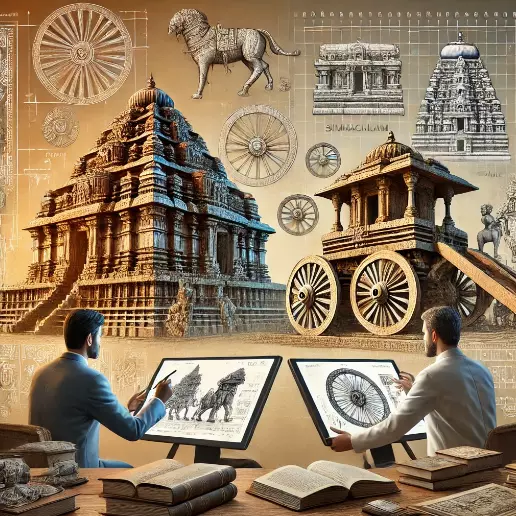Researchers draw out similarities between Konark and Simhachalam

Konark Temple in Odisha and Simhachalam Temple in Visakhapatnam share striking sculptural similarities, as revealed by a TORCH (Team of Research on Culture and Heritage) study.
World heritage structure Konark Temple located on the shores of Odisha and the Simhachalam Temple on a hill in AP’s Visakhapatnam have many sculptural similarities, a study by TORCH (Team of Research on Culture and Heritage) has determined.
Speaking to this correspondent on Friday, Saikumar, a member of TORCH, pointed out that both Konark and Simhachalam temples had been commissioned by King Narasimha Deva – I in the 13th Century. The Sun Temple in Konark as well as Narasimha Swamy Temple in Simhachalam have Alasa Kanyas in various postures. These are the royal maids in Kalinga architecture.
All 14 postures of Alasa Kanyas figure in the Simhachalam Temple. In particular, six pillars at Beda Mandapa behind the main temple have 24 exclusive Alasa Kanya sculptures, which are similar to Konark Temple.
The beauty of sculptures at Simhachalam Temple is comparable to Konark and other Kalingan temples built by the Eastern Ganga dynasty, which ruled Trikalinga region from the 8th Century to 15th Century.
Eastern Ganga rulers initially ruled their kingdom from Srimukhalingam in today’s Srikakulam district, before shifting to Cuttack.
The Eastern Ganga kings are also known as Jagannatha Sevaka or Jagannatha Putra. “Several temples had been built in north Andhra by rulers of the Eastern Ganga dynasty, which need to be brought to light,” Saikumar said.
Deepak Kumar Naik, a history researcher with the Odisha unit of INTACH (Indian National Trust for Art and Cultural Heritage), explained that Alasa Kanya is a Surasundari in Kalingan temple iconography, representing an indolent maiden. These Surasundaris are depicted in various poses, primarily in early-medieval Kalingan temple architecture.
Shilpa Prakasha, a medieval text on Kalinga temple architecture and design, describes 16 distinct types of Alasa Kanyas, including Torana, Mugdha, Manini, Dalamalika, Padmagandha, Darpani, Vinyasa, Ketakibharana, Matrmurti and Chamara.
Simhachalam and Konark temples, both built during the reign of Eastern Ganga Emperor Narasimha Deva I, feature Alasa Kanyas prominently.
Iconographic styles on the outer walls of both the temples are similar in many ways, suggesting that they may have been crafted by the same group of sculptors.
( Source : Deccan Chronicle )
Next Story

